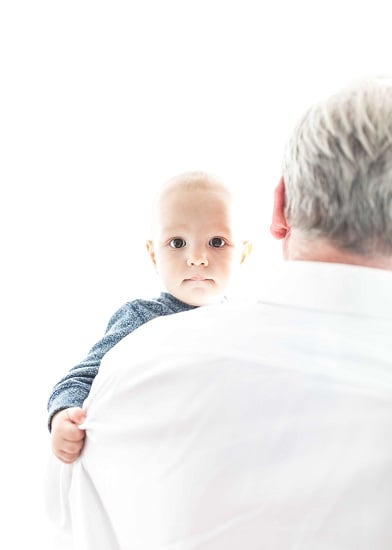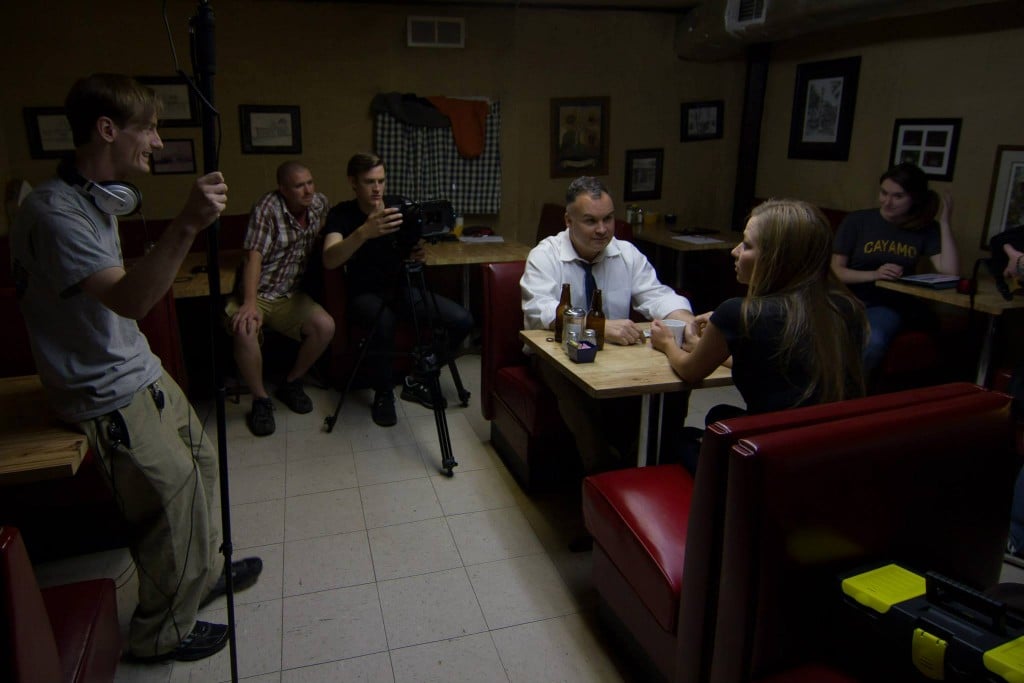With the right kind of lighting, black and white films can be just as vibrant as any color or 3-D film. Shadows created by the key light, leaving half of a face obscured during a clandestine meeting can build as much tension as a car explosion, given the right treatment. Replicating a natural light source or creating moonlight in the middle of the day are tricks of the trade of being a cinematographer, as well as a key grip or gaffer.
In most cases, the cinematographer (otherwise known as the Director of Photography or DP) works with the gaffer or lighting director to design the lighting setup for a particular shot. This could include stands, scaffolding, and even hand-held lighting, and nope, these aren’t the normal 60-watt bulbs you have in your light fixtures at home!
Types of Lighting

So much more goes into lighting than just choosing the right bulbs. Lighting equipment, the direction of the light, softboxes, and more, all play a part in setting the mood. Whether it’s making sure there are no shadows during a midday shoot at a park, or that there’s nothing but shadows in a film noir, the DP needs to have the lighting set up just right.
Common Lighting Fixtures
The two most common lighting setup fixtures are the open-faced and the fresnel fixtures. The open-faced fixture usually consists of four flaps that surround the bulb to help direct the light where it needs to be. Many different types of bulbs can be used with these fixtures, which are present on almost every single professional set.
Fresnel fixtures offer more exacting light and can be much more versatile, allowing cinematographers the ability to alternate between a multitude of looks, from a floodlight all the way down to a spotlight. This is because the fresnel has a thin lens that can be moved away from the light source.
When fixtures are needed as part of a scene, such as a flashlight, these are known as practical lights. Lamps, ceiling lights, and other everyday sources are used, but the bulbs are switched out for something that blends with other set lighting sources.
Light Sources
Tungsten
A film standard, tungsten lights have been used for decades to provide light on the set, in a studio, or on exterior shots. Known for their intense bulbs, these lights are as synonymous with the golden age of moviemaking as clapboards, megaphones, and director’s chairs.
Although other lighting techniques have become more popular as the majority of movies are shot digitally, tungsten lights are still used to create an aesthetic many of us grew up with. As filmmakers begin to drift back to celluloid for their movies, tungsten lights are experiencing a rebirth.
There are downsides to using these tried and true fixtures. Tungsten bulbs don’t last very long, become very hot, and are quite delicate – the oils on our fingers can even cause them to explode! However, they are relatively inexpensive to rent and can be found almost anywhere.
HMI
Much more powerful than tungsten while running much cooler, HMI (hydrargyrum medium-arc iodide) lights are ideal for replicating outdoor natural light on a studio set. They also don’t take up as much power as tungsten but are much more expensive and need much more attention during operation.
Fluorescent
If you have an unfinished basement or spend a lot of time in industrial buildings or warehouses, you’re familiar with fluorescent lights. They are also very popular in front of the camera, too, especially in horror movies or thrillers. These light tubes can often be made to flicker at just the right time to allow a killer, monster, or otherworldly beast to sneak up on the hero.
When used to make movies, however, that flickering can be troublesome. When using these inexpensive, low-powered lights, external ballasts (regulators) are needed to keep the glow consistent. Relatively inexpensive, fluorescent lights aren’t as adaptable as tungsten of HMI.
LED
Commonly found in homes, these lights are inexpensive, easy to work with, and provide steady light. Hence, LEDs are a great choice for low-budget filmmaking. Easy to filter, LED lights are also lightweight, create consistent light while dimming, and don’t get as hot as other bulbs. There are a few drawbacks, however.
There is no overall standard for the kind of “white” light LED bulbs provide. If you use LED lights in the home, you’ve probably noticed one brand can seem slightly off-color when compared to other brands. At home, that’s not a big deal but on film sets it’s an entirely different matter.
Lighting Terms
Motivated Lighting – Light that imitates a natural source when that source isn’t visible. For example, if it’s a midday scene, but you’re shooting at night: motivated lighting through a window is needed.
High Key Lighting – Bright and shadowless lighting. Used in early films to smooth out differences in light.
Low Key Lighting – The opposite of high key. Less light, more shadows, and usually limited to just one light.
Fill Lights – Used when shadows need to be removed from a scene, usually used behind the main subjects.
Backlights – Used behind subjects for high contrast with the background or to create silhouettes in low light situations.
Three-Point Lighting Setup – Refers to the use of key light, fill light, and backlight together during filming.
Key/Fill Lighting Ratio – The ratio of key light to fill light. This ratio is determined by what the scene will look like. A 4:1 ratio would mean a very bright scene while 1:2 ratio would be much darker.
Soft Light – Usually from a large fixture or diffusion sheet, this light produces shadows that are fainter than others, such as at dawn or early evening.
Color Temperature – The use of filters to match the lighting with the mood. Interestingly enough, low color temperature refers to yellow, reds, and warmer colors while high refers to cooler colors, such as blue.
Bounce Light – Essentially using a board or reflective surface to bounce light back onto the subject. Silk can be used for low bounce while metallic material can provide a hard bounce.
Learn Lighting form Industry Leaders
From silk sheets to scaffolding, a lot goes into making sure a scene has the right amount of light coming from the correct angles. It’s the cinematographer’s job to relay what he or she needs to the lighting crew for each scene on every film set, television set, or in the field shoot. The only way to truly know how the light will react in a particular situation comes with knowing how to do it yourself.
With the Film Connection Cinematography Program, you’ll learn how to set lights for a morning shoot, on a live set, or in low-light situations. With our program, you’ll learn the basics of lighting, to help you build a solid foundation for learning various lighting hacks on your own. And you’ll learn much more than that.
By placing you in a professional studio with an industry expert, you can learn so much more than lighting for film. Running cable, setting up cameras, operating as a dolly grip – if it’s involved in shooting a film, television show, or film video, your mentor is here to give you the education you need to start your career in filmmaking.
How you use this time, and what you do with what you’ve learned, is up to you. Many of our successful graduates have had jobs waiting for them after graduating from their six to nine-month programs. Some have even picked up work in the middle of their coursework.
Those who succeed are the very same students who make the most of their time on and off the set, and who practice what they’ve learned, off the clock. This program is for those that want to make this their life – if that sounds like you, apply today.



